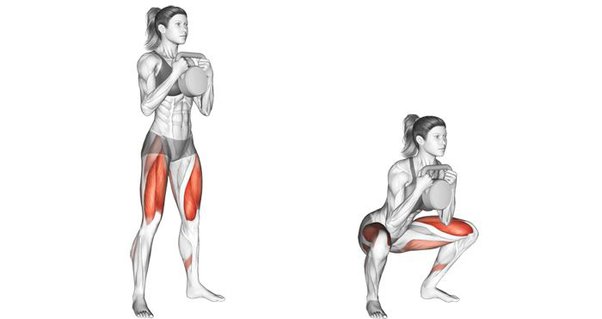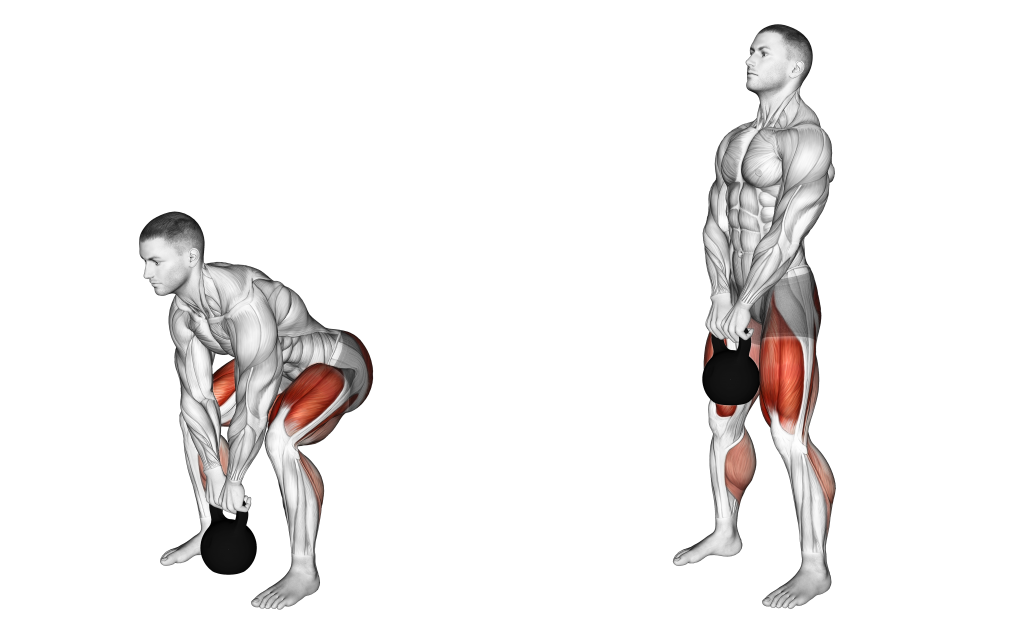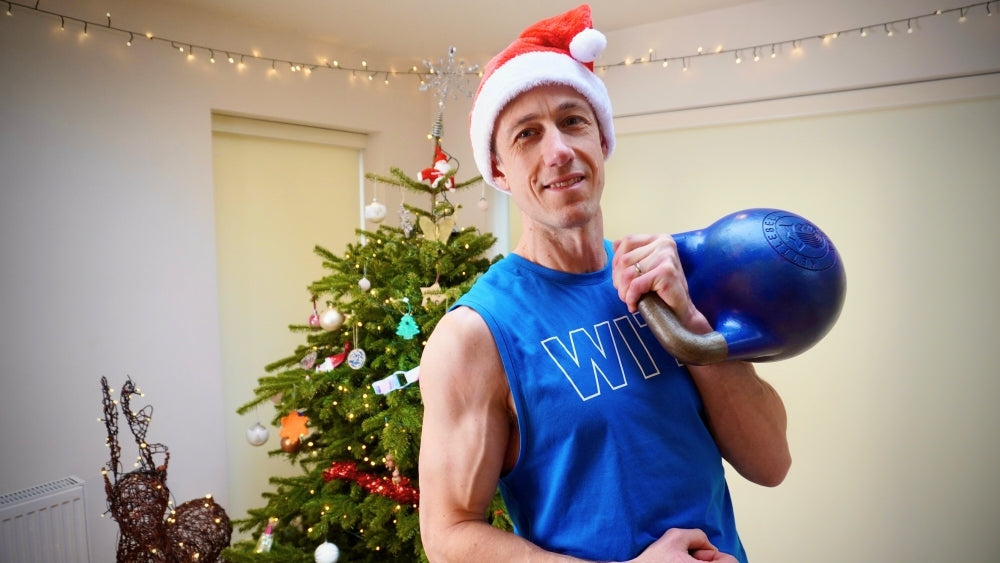Kettlebell goblet squats are a dynamic and effective exercise designed to elevate lower body strength and overall fitness. This article offers a comprehensive exploration, detailing the exercise's benefits, the specific muscles engaged, variations, and step-by-step instructions. From enhancing mobility and flexibility to targeting key muscle groups such as the quadriceps, hamstrings, glutes, and core, kettlebell goblet squats provide a holistic approach to strength training. The article guides readers through variations and offers clear instructions, ensuring both beginners and experienced individuals can perform the exercise safely. By addressing common questions and debunking some myths, this guide empowers readers to seamlessly integrate kettlebell goblet squats into their fitness routines for a well-rounded and impactful workout experience.
What is the difference between squats and Kettlebell Goblet squats?
The key distinction between traditional squats and Kettlebell Goblet squats lies in the way the exercise is performed and the equipment used. While both exercises target similar muscle groups, goblet squats introduce a front-loaded element. In goblet squats, individuals hold a kettlebell close to their chest, which alters the weight distribution and demands a more upright torso. This positioning not only intensifies the engagement of the core muscles but also places less stress on the lower back compared to some traditional squat variations.
Traditional squats, on the other hand, encompass a variety of stances and weight placements. These can include bodyweight squats, back squats with a barbell across the shoulders, front squats with a barbell in front of the shoulders, or overhead squats. The choice of squat variation depends on individual goals and preferences. While both exercises share the fundamental squatting movement, goblet squats, with their unique weight placement and hand position, offer a user-friendly entry point for beginners and a valuable tool for refining squat mechanics across all fitness levels.
Benefits of Kettlebell Goblet Squats
Full-Body Engagement
- Kettlebell goblet squats engage multiple muscle groups simultaneously, providing a comprehensive full-body workout. The lower body, including the quadriceps, hamstrings, and calves, bears the primary load, while the core, back, and shoulders also play crucial stabilising roles.
Improved Mobility and Flexibility
- This compound exercise promotes improved hip and ankle mobility, enhancing your overall range of motion. The goblet squat's movement pattern encourages flexibility in the hips and knees, making it a valuable addition to any functional fitness routine.
Core Strengthening
- The positioning of the kettlebell in front of the body forces the core muscles to work harder to maintain an upright posture. This not only strengthens the abdominal muscles but also improves overall core stability.
Versatility
- Kettlebell goblet squats are adaptable to various fitness levels. Beginners can start with lighter weights and gradually progress, while advanced lifters can challenge themselves with heavier kettlebells for increased resistance.
What muscles do the kettlebell goblet squat work?

Kettlebell goblet squats primarily target the quadriceps, hamstrings, glutes, calves, core muscles, and upper back.
- Quadriceps: The front of the thighs is heavily engaged during the upward phase of the squat.
- Hamstrings: The back of the thighs works to control the descent and power the ascent.
- Glutes: The buttocks play a pivotal role in hip extension, contributing significantly to the upward phase of the squat.
- Calves: Calf muscles assist in stabilizing the ankle joints during the movement.
- Core Muscles: The entire core, including the rectus abdominis and obliques, activates to maintain an upright position.
- Back Muscles: The erector spinae and upper back muscles work to stabilize the spine throughout the movement.
How to Perform Kettlebell Goblet Squats
- Begin by standing with your feet shoulder-width apart.
- Hold a kettlebell vertically with both hands, gripping the sides of the handle close to your chest.
- Initiate the movement by pushing your hips back and bending your knees.
- Lower your body into a squat position, ensuring your back remains straight and your elbows touch the inside of your knees or as low as your flexibility allows.
- Push through your heels to return to the starting position, straightening your hips and knees.
Kettlebell Goblet Squat Variations
Sumo Goblet Squat
- Widen your stance, turning your toes outward. Perform the goblet squat with the kettlebell held between your legs.
Pulse Goblet Squat
- After reaching the lowest point of the squat, perform small, controlled pulses before ascending back to the starting position.
Single-Leg Goblet Squat
- Lift one foot off the ground and extend it forward. Perform the goblet squat on a single leg, emphasizing balance and stability.
Nutrition and Recovery for Optimal Goblet Squat Performance
Performing kettlebell goblet squats requires a well-rounded approach to nutrition and recovery to support muscle function, energy levels, and overall well-being.
-
Hydration
Adequate water intake is essential for overall health and muscle function. Dehydration can lead to decreased performance and increased risk of injury. Aim to drink enough water throughout the day, especially before and after your workout.
-
Protein Intake
Protein is crucial for muscle repair and growth. Ensure you consume an adequate amount of protein from sources like lean meats, dairy, eggs, and plant-based sources like beans and lentils.
-
Carbohydrates
-
Healthy Fats
Include sources of healthy fats, such as avocados, nuts, and olive oil, for overall energy and joint health.
-
Post-Workout Nutrition
Consume a balanced meal or snack containing protein and carbohydrates after your workout to replenish glycogen stores and support muscle recovery.
-
Rest and Sleep
Ensure you get enough quality sleep as it is crucial for recovery and muscle growth. Aim for 7-9 hours of sleep per night.
-
Active Recovery
Incorporate active recovery days into your routine, engaging in low-intensity activities like walking or yoga to promote blood flow and reduce muscle soreness.
Warm-Up Routine for Kettlebell Goblet Squats
-
Cardiovascular Warm-Up (5-10 minutes)
Start with light cardio exercises like jogging or jumping jacks to increase heart rate and blood flow.
-
Dynamic Stretching (5 minutes)
Perform dynamic stretches for the lower body, including leg swings, hip circles, and knee-to-chest stretches, to improve flexibility and range of motion.
-
Bodyweight Squats (2 sets of 15 reps)
Perform bodyweight squats to gradually engage the muscles and reinforce proper squatting mechanics.
-
Kettlebell Goblet Squat Warm-Up Set (light weight, 10-12 reps)
Perform a warm-up set with a light kettlebell to prepare your muscles for the upcoming workout.
Kettlebell Goblet Squat Workout Plan
Note: The following workout plans are general guidelines. Individual fitness levels may vary, so adjust the weights and intensity based on your capabilities.
Beginner:
- Goblet Squats: 3 sets x 12-15 reps
- Bodyweight Lunges: 3 sets x 12 reps each leg
- Plank: 3 sets x 30 seconds
Intermediate:
- Goblet Squats: 4 sets x 10-12 reps (moderate weight)
- Romanian Deadlifts: 3 sets x 12 reps
- Russian Twists: 3 sets x 20 reps (with or without weight)
Advanced:
- Goblet Squats: 4 sets x 8-10 reps (heavy weight)
- Bulgarian Split Squats: 3 sets x 10 reps each leg
- Hanging Leg Raises: 3 sets x 15 reps
Remember to progressively increase the weight and intensity as your strength and fitness levels improve. Always prioritize proper form over heavy weights to reduce the risk of injury. Additionally, listen to your body and allow for adequate rest between workouts for optimal recovery. Consulting with a fitness professional or healthcare provider before starting a new exercise program is advisable, especially if you have pre-existing health conditions or concerns.
Kettlebell Goblet Squat FAQ's
Q: What kettlebell Goblet squats are good for?
A:Kettlebell goblet squats are highly beneficial for various aspects of physical fitness. Firstly, they are instrumental in developing lower body strength, targeting major muscle groups such as the quadriceps, hamstrings, and glutes. This exercise also significantly engages the core muscles, including the rectus abdominis and obliques, leading to improved core strength and stability.
Whether you're looking to build strength, tone your muscles, or improve functional movement, kettlebell goblet squats provide a versatile and effective solution. Regular incorporation of this exercise into your workout routine can lead to comprehensive fitness benefits, making it a valuable addition for individuals of various fitness levels and goals.
- Do Goblet Squats Hit Abs?
A: Yes, goblet squats effectively engage the abdominal muscles, making them an excellent exercise for core development. The positioning of the weight close to the chest in a goblet squat creates a forward load, requiring the core muscles, including the rectus abdominis and obliques, to work harder to maintain an upright posture. As you descend into the squat and return to the starting position, the core plays a crucial role in stabilizing the spine. Therefore, goblet squats not only target the muscles in the lower body but also provide a substantial workout for the abdominal muscles, contributing to improved core strength and stability.
- Can You Do Goblet Squats Every Day?
A: While goblet squats are a beneficial exercise, doing them every day may not be necessary or optimal for everyone. Like any strength training exercise, the muscles need time to recover and adapt to the stress placed on them during the workout. Overtraining, especially without adequate rest, may increase the risk of injury and hinder progress. It's generally recommended to allow at least 48 hours of rest between sessions targeting the same muscle groups.
However, the frequency of goblet squats or any exercise depends on individual factors such as fitness level, overall workout routine, and personal goals. Some individuals may benefit from incorporating goblet squats into their routine several times a week, while others may prefer less frequent sessions. It's crucial to listen to your body, pay attention to signs of fatigue or strain, and consider consulting with a fitness professional or healthcare provider to determine the most suitable frequency based on your specific needs and fitness goals.
Looking for kettlebells built to withstand intense workouts and provide a reliable grip? Our Powder Coat Kettlebell offers durability and versatility, making it an excellent choice for various fitness routines. Explore our Powder Coat Kettlebell here to elevate your training sessions."
Conclusion
Incorporating kettlebell goblet squats into your fitness routine unlocks a plethora of benefits. Tailor your approach based on your fitness level, gradually increasing the challenge. Whether you opt for goblet squats or explore sumo squats, these exercises empower you to build strength, improve mobility, and sculpt a resilient lower body. Remember, consistency and proper form are the keys to unlocking your full potential in these empowering exercises.










